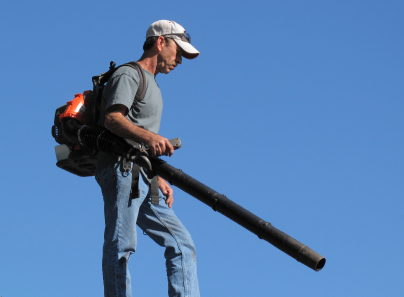Yes indeed, the City of Westlake Village has detailed guidelines in place for the operation of leaf blowers. So don't blow it...or perhaps I should say, sure, blow it, but per these guidelines. If not, someone may call the Poleafs.
RECOMMENDED GUIDELINES FOR OPERATION OF LEAF BLOWERS
The Westlake Village City Council has approved the following guidelines for the operation of leaf blowers which are intended to reduce the noise, dust, fumes and lake pollution generated by the machines. FAILURE TO ABIDE by these guidelines could result in legal prohibitions against the use of leaf blowers.
1. Hours of Operation: Use leaf blowers only between the following hours --
a. 7:00 am to 4:00 pm, Monday through Friday, and 8:00 am to 4:00 pm on Saturday (during early morning hours use of power equipment should be deferred as long as possible).
b. Do not use gas powered leaf blowers on Sundays and legal holidays.
c. Check with property owners and/or Homeowners Associations for hours of operation in certain neighborhoods which may be different from the above-mentioned City hours
2. To Reduce Noise:
a. Operate at lowest speed possible. If it is absolutely necessary to operate at higher speeds, do so only for a maximum duration of two minutes.
b. Always use a muffler. Muffler should be serviced and cleaned periodically to remove carbon build up.
c. Always use an air filter. Service filter frequently to keep clean.
d. Use proper hose extensions and nozzles with swivels because less power is required when leaf blower hose is positioned close to debris.
e. Fan Impellers behind back pad should be serviced on a regular basis to insure removal of debris clogging smooth air flow.
f. As situations permit, update equipment to models which meet the ANSI B.175.2 noise standard of 65dB(A) or less. Newer model leaf blowers are much more quiet, and are much more fuel efficient, saving money on fuel costs and generating fewer pollutants from the engine.
g. Follow guidelines of the South Coast Air Quality Management District with regard to maintenance and operation of small internal combustion engines
3. Dust, Fumes, and Lake Pollution:
a. Form small piles of debris. Pick up debris and properly dispose by placing in bag or container.
b. Use mist attachments or lightly sprinkle area when possible to minimize dust created by blowing of debris.
c. Do not blow debris on to neighboring property or into City streets and gutters. All debris must be cleaned from City streets and gutters immediately.
d. Direct blower away from lake. Do not blow debris into lake under any circumstances.
e. Observe wind direction when operating blower. Blow in same direction of wind.
f. Operate blowers at manufacturer's recommended fuel mixture to reduce smoking and fumes.
4. DO NOT Use Leaf Blowers:
a. When other gasoline powered machines are being used on the property or in the adjoining area.
b. When there are excessive winds.
c. When any doors or windows are open.
d. When area to be cleaned is small; sweeping and raking is recommended.
Source: City of Westlake Village website: www.wlv.org







